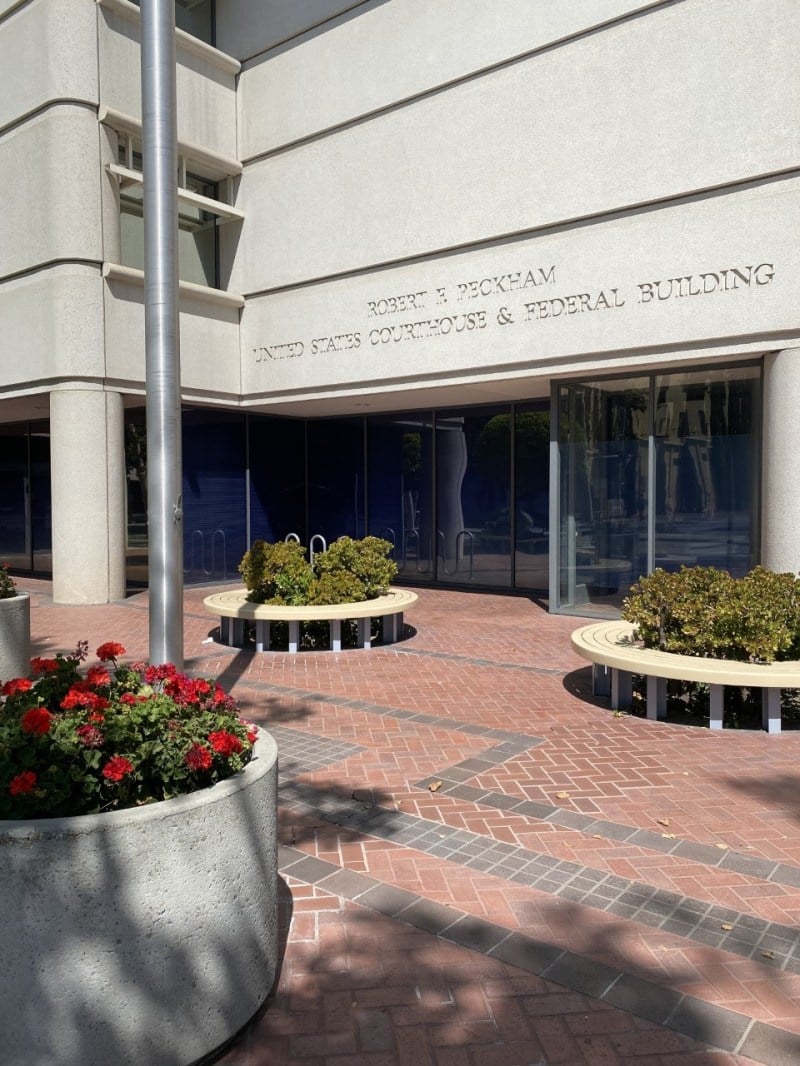The highly anticipated trial of Stanford drop-out Elizabeth Holmes, a “case about fraud, about lying and cheating to get money,” according to federal prosecutors, began with opening arguments in a San Jose federal courtroom on Wednesday morning. Holmes is charged with an alleged scheme to defraud investors and patients of Theranos, her former biotechnology company.
Theranos, a now-defunct healthcare technology start-up, aimed to revolutionize blood testing by making it cost-effective and accessible, allowing patients to use a single drop of blood to conduct a host of tests ranging from basic assays to advanced genetic testing.
The prosecution, led by Assistant U.S. Attorney Robert Leach, aimed to convince the jury that Holmes knowingly intended to mislead investors and patients about the accuracy and efficiency of Theranos’ technology for personal financial gain.
“Out of money and out of options, Ms. Holmes decided to mislead,” Leach said.
While Holmes told investors and patients that Theranos’ technology was fully functional and capable of running more than 1,000 blood tests, in reality, the device was not fully functional and Theranos only ran a total of 12 assays in its clinical lab, according to the prosecution.
Holmes has pleaded not guilty. Only one of the case’s 12 jurors needs to side with Holmes in order to render a not-guilty verdict. If convicted, Holmes faces up to 20 years in federal prison.
Holmes founded Theranos at age 19 after dropping out of Stanford at the end of her first year. The alleged conspiracy not only led Holmes to make billions in personal revenue, but also served as an outlet for her rise to fame, with Holmes most notably being featured on the cover of Fortune magazine, which at the time hailed her as “the next Bill Gates” and “one of the most powerful women in business.”
The prosecution procedurally laid out ways in which Holmes misled Theranos patients and investors, including Walgreens and Safeway, both companies with which Theranos had established partnerships. They alleged that Holmes used her presence in the media and the connections she had claimed to maintain with both U.S. military personnel and powerful pharmaceutical companies to illustrate the company’s promise and success.
The prosecution alleged that Holmes induced journalist Joseph Rago of the Wall Street Journal to falsely endorse Theranos’ technology and collaborated with him on his piece about Theranos prior to its publication. According to the prosecution, Holmes also presented forged reports from pharmaceutical companies such as Pfizer claiming that Theranos technology had “superior performance” and “robust functionality.”
But the defense, led by Lance Wade, an attorney for Holmes, argued that Holmes’ desire to solicit media coverage of Theranos was not an indication of her “vanity project,” but rather intended to propel the company’s growth.
Holmes’ defense urged jurors to view her with a sense of realness and humanity — not as a “villain,” but rather as a “living, breathing, human being who tried her best and failed.” Further, the defense asserted that Theranos failed not due to a fraudulent scheme, but rather because a young CEO confronted obstacles that she “naively underestimated.” And, they said, Holmes was not defrauding Theranos investors.
“If she wanted their money, why not cash in?” Wade said. “She never did. She passed on every opportunity.”
The defense said that Holmes was aware she lacked the experience and skills needed to create the innovative technology that the company promised, so she surrounded herself with experienced individuals, including former Theranos executive Ramesh ‘Sunny’ Balwani, with whom Holmes had a romantic relationship. Balwani will be tried separately for the same offenses as Holmes. He, too, has pleaded not guilty.
The defense then outlined the difference between the investor and the patient, despite the prosecution suggesting that the two were equally misled by Holmes. Theranos’ investors, who included high-profile individuals like former Secretary of State Henry Kissinger and media mogul Rupert Murdoch, were sophisticated billionaires with expertise, the defense said. They signed a “speculative investment,” and were aware of the difficulties that a start-up faces when up against regulatory bodies like the FDA. According to the defense, Theranos investors acknowledged that the potential financial gain outweighed the risks.
The defense also sought to contextualize the allegations against Holmes, citing inaccurate test results as something that all laboratories aim to avoid but that are nonetheless generated daily. While poor lab operations were one of Theranos’ biggest mistakes, the defense argued that Holmes had every reason to believe the laboratory tests were accurate and reliable because as CEO she was not directing patient testing, nor did she have the expertise to. Under state and federal regulations, it is the lab director who manages quality control and validation tests, all of which at Theranos were documented on signed validation reports by Balwani and other qualified staff, according to the defense.
Jurors with notebooks were encouraged by the defense to tally each of the prosecution’s witnesses next to the number 8 million. According to the defense, 8 million test results were generated by Theranos. The defense’s 20 witnesses — all of whom allegedly received false lab results from Theranos — represent an error rate of 0.00025%. The defense pressed jurors to ask themselves whether such data represents meaningful evidence of fraud.
The defense concluded by telling the jury that Holmes remains “steadfast” in her beliefs, saying that she “didn’t commit crimes, but committed her life to a mission.”
The trial continues this week with the presentation of witnesses. It is expected to last 13 weeks.
